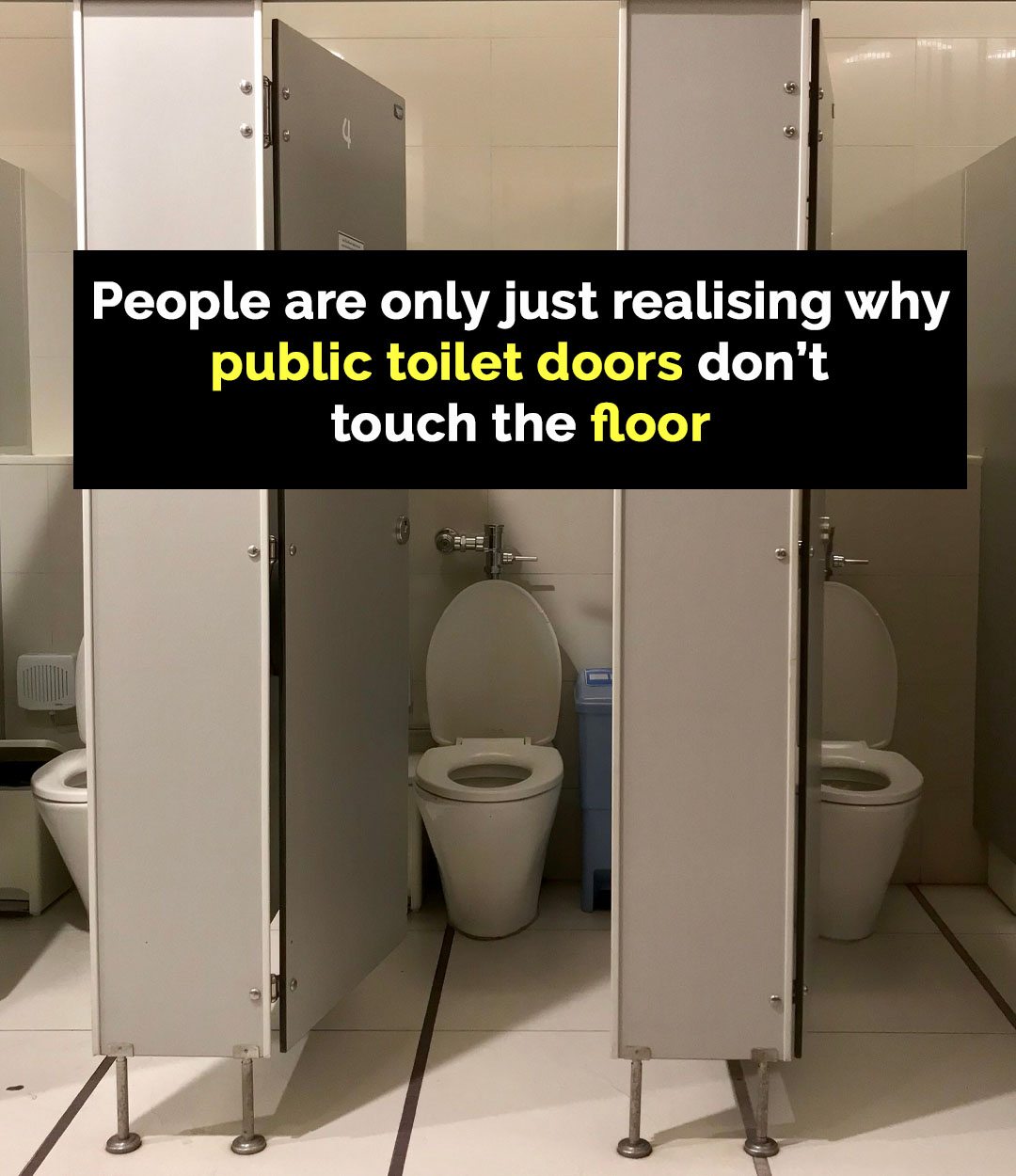If you’ve ever been in a public bathroom with a curious child who’s waiting for her mom to come out of a stall, you’ll know the gap between the door and the floor is a huge inconvenience. While that space might seem odd (and yes, very awkward), the space is an intentional design element that serves several purposes, making your business a little cleaner, safer and practical.
The gap between the door and floor in public bathroom stalls is one of those quirky design choices that frequently sparks debate. Some people see it as a practical feature, while others cringe at the lack of privacy.
The floating stall doors may not be perfect, but they’re a clever blend of practicality and cost-saving that keeps restrooms running smoothly.
Let’s unravel the real purpose behind those gaps!
Easier for cleaning
That gap isn’t just a random design choice – it’s a cleaning hack! Custodial staff can easily sweep and mop under the doors without needing to open each stall. In high-traffic restrooms, this makes maintaining hygiene much faster and more efficient.
Emergency access
If there’s a medical emergency, the open space allows easy access to either bystanders or professionals, who can assist without breaking down the door.
You might think bathroom accidents don’t happen a lot, but research reveals that there are “40,000 toilet-related injuries in the U.S. every year!”
Keeps the line moving
We’ve all been in those long restroom lines, right? The gap lets you peek underneath to see if a stall is occupied, sparing you from doing that awkward knock-and-wait routine.
“The doors have gaps so you can see if someone is in the stall, vs. knocking loudly on the door and scaring…errr…the s*** too long, helping keep the stalls available for others,” offers one Redditor.
Prevents naughty behavior
While the toilet itself serves one key purpose, there’s always that person who takes advantage of the space behind a closed door.
“Drugs and sex. That’s really all it is. Most people aren’t going to peek in, but if an employee needs to they can,” suggests another netizen.
By reducing privacy and making it easier for others to notice what’s happening, these doors encourage safer and more appropriate use of the space.
Breathe easier
Crowded restrooms can get stuffy fast, and gaps allow better air circulation, making the “stink dissipate easily,” according to one cyber fan.

Ventilation is especially important in spaces where odor control is a priority. Better airflow makes the experience slightly more bearable for everyone.
Cost-effective design
Doors that don’t touch the ground use less material, reducing manufacturing costs. Plus, they’re easier to install and maintain, which is a win for builders and maintenance teams alike.
Supply shortage
We’ve all experienced the dreaded empty roll of toilet paper. If you’re lucky to have someone else in the main bathroom area, that space between the door and floor will be a delivery point for a new roll.
Trapped
If the door is jammed and you’re willing to crawl under, the gap at the bottom of the stall door allows an easy escape, ensuring your freedom.
The Trade-Off: Privacy
Of course, not everyone is thrilled about the open-bottom design: “I really have no idea why our bathroom stalls are like that here,” shares one netizen. “One would think that we could get a little privacy.”
The lack of full privacy can feel uncomfortable, especially in moments when you just want to be alone. But when you weigh the benefits – cleanliness, safety, and efficiency – it starts to make a lot of sense.
Did you know why toilet doors don’t reach the ground in public toilets? Please let us know what you think in the comments section!
